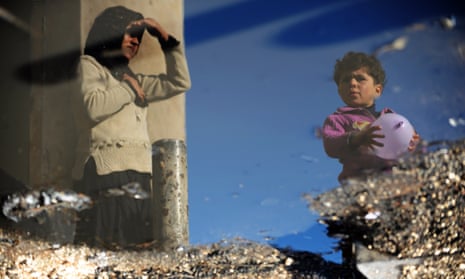The manifest dreadfulness of the Syrian crisis has now driven almost 5 million people from the country, with another 7 million displaced internally. Unless the exodus is halted, Syria will be condemned to irreversible, terminal decline. This last week, however, has seen some glimmers of hope, with a ceasefire being brokered in Astana, the Kazakh capital, and Donald Trump supporting the creation of safe zones within Syria. This could be key to reconstructing that devastated land and getting meaningful amounts of aid in quickly.
The humanitarian safe zone concept recognises that the vast majority of Syrians want to remain in or return to their homeland, if it is free of the tyranny and the terror of Islamic State and President Bashar al-Assad. Trump’s support could be central to getting Russia and Iran to sign up to this approach. Russia, not unexpectedly, suggests caution but does not dismiss the idea.
A pilot scheme in north-west Syria would be the best way to get the process started, with this initial zone lying between Kilis and Reyhanli in Turkey, Aleppo and Idlib. If successful, the concept could be replicated in the south on the Jordanian border, before expanding into other areas as they are liberated from Isis.
This first area, of about 1,500 sq km, is currently free of Isis and Assad regime troops, and some way from key Russian locations in Syria such as Latakia and Tartus. Predominantly controlled by the Free Syrian Army and moderate groups, it is home to about 500,000 refugees, living in abject poverty in camps near the border. These could be expanded and improved, with food, water and electricity flowing in from the many NGOs situated nearby in Turkey.
Those children who aren’t lucky enough to attend the very few functioning schools, such as those run by the charity Syria Relief, would again be able to get an education. The international medical charity of which I am the security and chemical defence adviser, the Union of Medical Care and Relief Organisations (UOSSM), runs a number of effective hospitals and clinics in the area, and is preparing to increase this effort if the safe zone materialises. Some 75% of nine- to 13-year-olds in this area suffer from post-traumatic stress disorder, and they need urgent help. Our main hospital at Bab al-Hawa, just over the Turkish border near Reyhanli, has treated many of the most challenging cases from east Aleppo and continues to do so, but is short of some critical medicines and equipment.

For the safe zone to live up to its name, the Assad regime must stop dropping barrel bombs indiscriminately on civilians. Even with the ceasefire in place, places like Wadi Barada and east Ghouta are still under attack. Worst of all, Assad continues to drop chlorine (chemical) barrel bombs. As UOSSM doctors put it: “We can hide from bombs and bullets, but not gas.” Trump has stated that he would not have allowed the United States to abandon its threat to intervene in Syria if chemical weapons were used, and I for one am hopeful that he will soon say that the “red line” is back in force.
The security of the first safe zone could be supported by British or American ships in the eastern Mediterranean. Their missiles and radar would negate the need for coalition aircraft to fly in “Syrian” and “Russian” air space, which is guarded by anti-aircraft weapons.
Security on the ground should be policed by United Nations monitors, who have proved effective in east Aleppo. They could be supported by moderate militias already operating in the area, as well as experts from the coalition and ideally Turkish, Nato or UN troops.
Humanitarian aid must be allowed to flow into the area as quickly as possible, together with resources needed to build and repair housing and other essential infrastructure. Many NGOs have stockpiled equipment on the Turkish side of the border for this eventuality. It will be hugely challenging to get this aid in through just two crossings at Reyhanli and Kilis, on poor roads, but with co-ordination and energy it is achievable. UOSSM has proved that it can service medical facilities across this region, and its model of local employment of doctors and logistic networks, financed by international donors, is worth following, or at least learning from.
It will be a struggle to make the safe zones work, and Turkey, Russia, Iran, the US and the UN will all have to play their part. But however great the cost, it will still be less than housing millions of displaced Syrians and allowing the collapse of this once-great nation.
There are reasons for optimism. The talks in Astana have brought what looks like a meaningful ceasefire; Presidents Trump and Putin are set to talk over the weekend, and Theresa May, visiting Turkey tomorrow, appears keen to offer the UK’s not inconsiderable skills and resources for the “muscular” humanitarianism required to start to get Syria back on its feet. Let’s hope they do not miss this fleeting opportunity to do some good.
